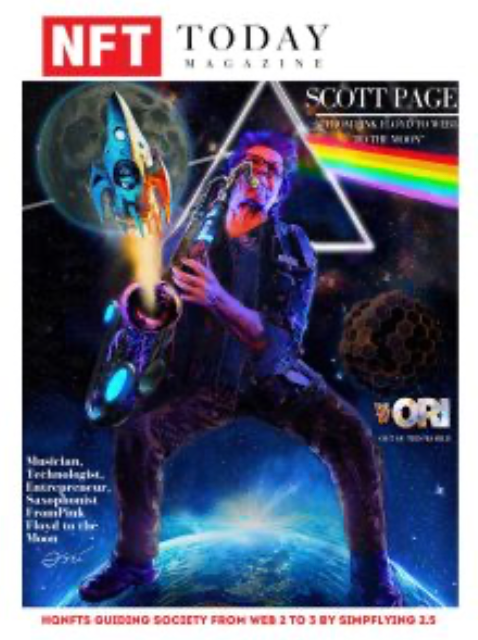Compositions in Code: The Art of Processing and p5.js
Staff Writer • 2025-02-18
A Showcase of Digital Art and Innovation Presented in partnership with the Tezos Foundation, Compositions in Code: The Art of Processing and p5.js is the latest and final installation series at the Museum of the Moving Image (MoMI). Running from March 7 to August 24, 2025, with an opening reception on March 6, the exhibition will feature works by artists Marius Watz & Aleksandra Jovanić, LIA & Sarah Ridgley, and Robert Hodgin & Melissa Wiederrecht. These artists leverage the open-source programming environments Processing and p5.js to create dynamic, generative artworks. As part of this exhibition, fragments of the displayed works will be available for free collection both onsite and online via the Tezos blockchain, reinforcing the growing relationship between digital art and decentralized technologies. The Evolution of Code as an Artistic Medium Processing has been instrumental in transforming how code is perceived as an artistic tool. Launched in 2001 by Casey Reas and Ben Fry, Processing simplified coding for artists, offering an intuitive and immediate visual feedback loop. More recently, Lauren Lee McCarthy’s creation of p5.js brought these concepts to JavaScript, expanding accessibility and online interactivity. Compositions in Code pairs three early adopters of Processing—Marius Watz, LIA, and Robert Hodgin—with contemporary p5.js artists—Aleksandra Jovanić, Sarah Ridgley, and Melissa Wiederrecht. Each diptych is curated in collaboration with the artists themselves, reflecting the evolution of generative art over two decades. The exhibition is organized by MoMI’s Associate Curator of Media Arts, Regina Harsanyi. Tezos: A Hub for Generative Digital Art The Tezos blockchain has become a significant platform for generative and code-based artists, hosting renowned creators on platforms such as fxhash, objkt, and EditArt. By supporting thousands of digital artists, Tezos facilitates innovation and accessibility in the NFT space, bridging the gap between art and blockchain technology. In alignment with this ethos, Compositions in Code demonstrates how blockchain technology can enhance art collection and preservation. Visitors will have the opportunity to claim fragments of exhibited works, furthering the intersection of decentralized technology and digital creativity. Opening Reception and Expert Discussion The exhibition launch on March 6 at 7:00 p.m. will feature a panel discussion including: Marius Watz, featured artist Aleksandra Artamonovskaja, Head of Arts at Trilitech, Tezos Ecosystem Roopa Vasudevan, mentor at the Processing Foundation Moderated by Regina Harsanyi, MoMI’s Associate Curator of Media Arts This discussion will explore the significance of generative art, the influence of Processing and p5.js, and how blockchain technology is reshaping the art world. The Lasting Impact of Processing and p5.js Beyond their technical applications, Processing and p5.js have played a transformative role in making creative coding more accessible. By removing traditional barriers to entry, these platforms have empowered generations of artists, educators, and students to explore algorithmic art, interactivity, and digital expression. Processing’s user-friendly environment has influenced not only artistic practices but also educational methodologies, making it a staple in art institutions and coding curriculums. Meanwhile, p5.js brings Processing’s foundational principles to the internet age, enabling seamless browser-based execution without additional plug-ins. Together, they have cemented themselves as critical tools in contemporary digital art. A Legacy of Media Art Installations at MoMI Compositions in Code marks the fourth and final installment of media art exhibitions on MoMI’s Herbert S. Schlosser Media Wall, created in collaboration with the Tezos Foundation. Additional support comes from the Processing Foundation, further highlighting the exhibition’s role in celebrating the intersection of art, technology, and open-source communities. About Tezos Tezos is a cutting-edge, energy-efficient blockchain embraced by thousands of digital artists. Cultural institutions such as Serpentine, Musée d'Orsay, and LAS Art Foundation have integrated Tezos into their programming, demonstrating the blockchain’s potential for artistic innovation. About the Museum of the Moving Image Founded in 1985, MoMI is dedicated to exploring the history, art, and technology of the moving image. Located in Astoria, New York, the museum offers exhibitions, film screenings, discussions, and educational programs. Housing one of the nation’s most comprehensive collections of moving image artifacts, MoMI presents over 500 films annually and features exhibitions such as Behind the Screen and The Jim Henson Exhibition. For more information, visit movingimage.org.
See More Posts
A look at how NFTS, Web 3, Gaming, Cryptocurrencies and Blockchain are reshaping businesses across the globe.
@NFT Today Magazine


